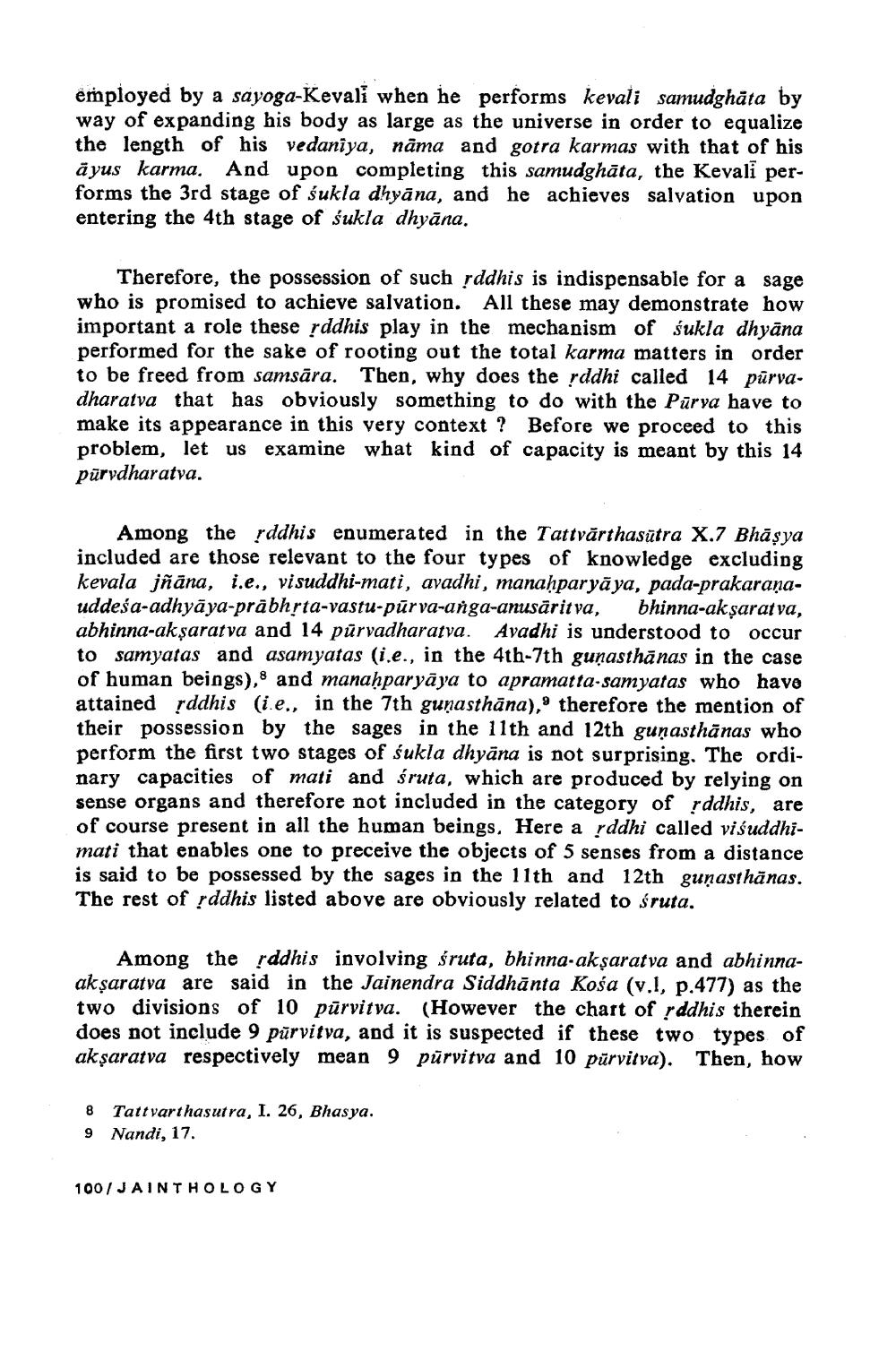________________
employed by a sayoga-Kevali when he performs kevali samudghāta by way of expanding his body as large as the universe in order to equalize the length of his vedaniya, nama and gotra karmas with that of his äyus karma. And upon completing this samudghāta, the Kevali performs the 3rd stage of śukla dhyāna, and he achieves salvation upon entering the 4th stage of śukla dhyāna.
Therefore, the possession of such rddhis is indispensable for a sage who is promised to achieve salvation. All these may demonstrate how important a role these rddhis play in the mechanism of śukla dhyāna performed for the sake of rooting out the total karma matters in order to be freed from samsāra. Then, why does the rddhi called 14 pūrva. dharatva that has obviously something to do with the Pūrva have to make its appearance in this very context ? Before we proceed to this problem, let us examine what kind of capacity is meant by this 14 pūrvdharatva.
Among the rddhis enumerated in the Tattvărthasütra X.7 Bhāşya included are those relevant to the four types of knowledge excluding kevala jñāna, i.e., visuddhi-mati, avadhi, manahparyāya, pada-prakaranauddeśa-adhyāya-prābhrta-vastu-pūrva-anga-anusäritva, bhinna-aksaratva, abhinna-ak şarat va and 14 pūrvadharaiva. Avadhi is understood to occur to samyatas and asamyatas (i.e., in the 4th-7th gunasthānas in the case of human beings), 8 and manahparyāya to apramatta.samyatas who have attained rddhis (ie, in the 7th guņasthāna),' therefore the mention of their possession by the sages in the 11th and 12th gunasthānas who perform the first two stages of śukla dhyāna is not surprising. The ordinary capacities of mati and śruta, which are produced by relying on sense organs and therefore not included in the category of rddhis, are of course present in all the human beings. Here a rddhi called visuddhimati that enables one to preceive the objects of 5 senses from a distance is said to be possessed by the sages in the 11th and 12th gunasthānas. The rest of rddhis listed above are obviously related to śruta.
Among the rddhis involving śruta, bhinna-aksaratva and abhinnaak saratva are said in the Jainendra Siddhānta Kośa (v.1, p.477) as the two divisions of 10 pūrvitva. (However the chart of rddhis therein does not include 9 pūrvitva, and it is suspected if these two types of aksaratva respectively mean 9 pūrvitva and 10 pūrvitva). Then, how
8 Tattvarthasutra, I. 26, Bhasya. 9 Nandi, 17.
100/JAINTHOLOGY




